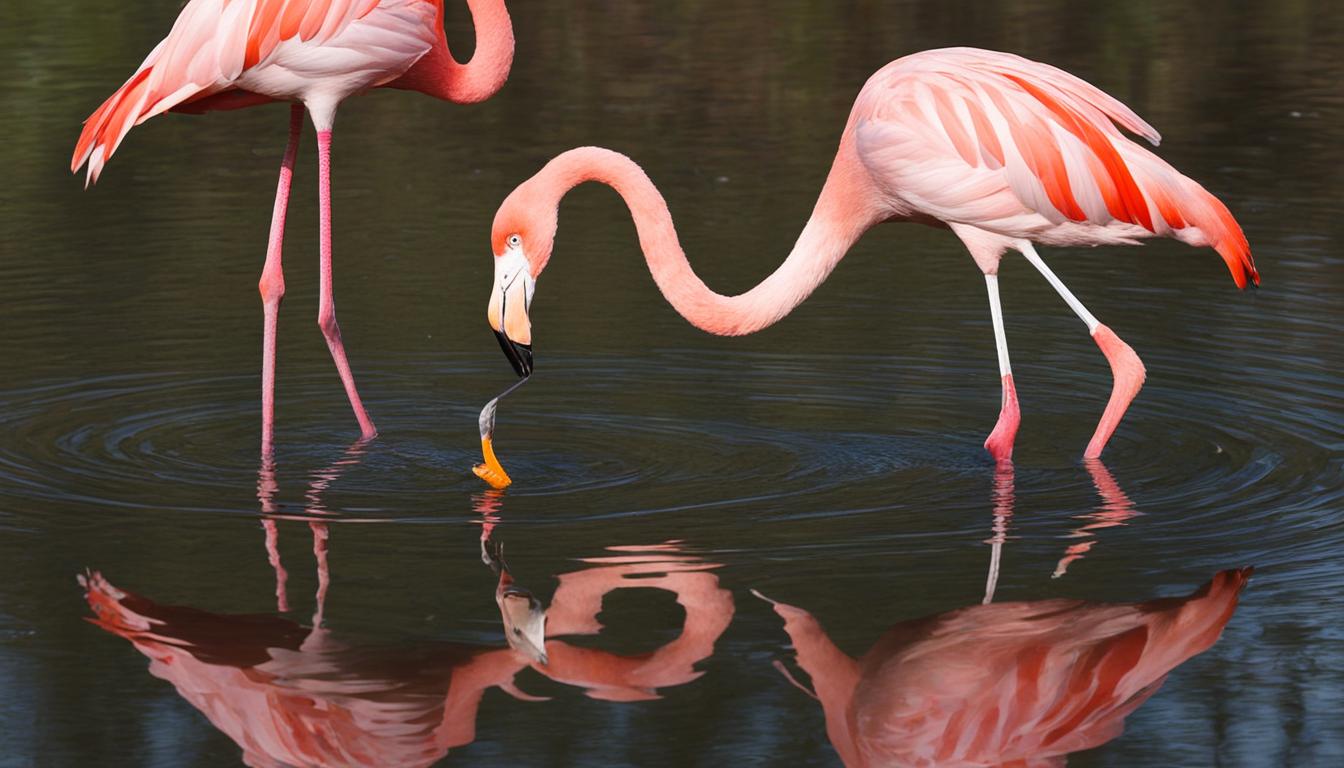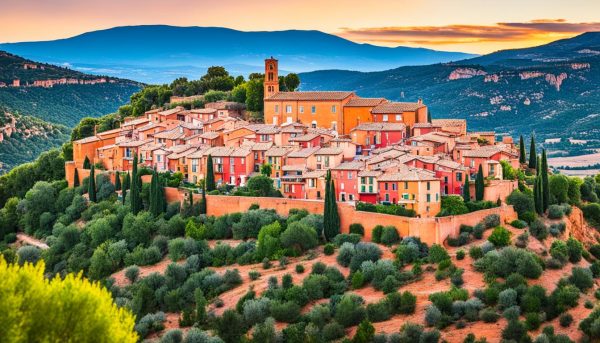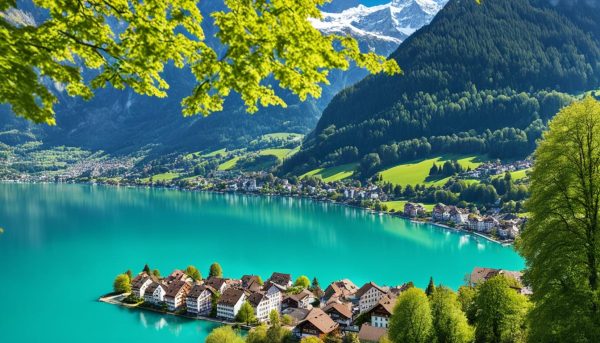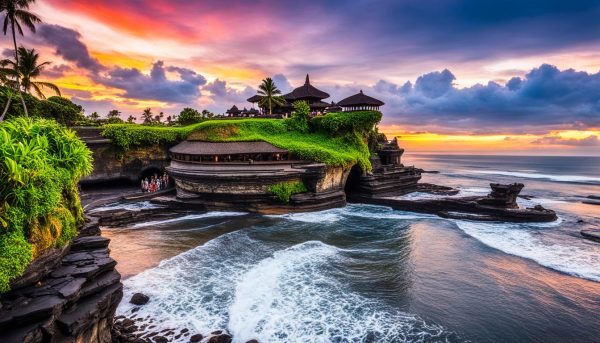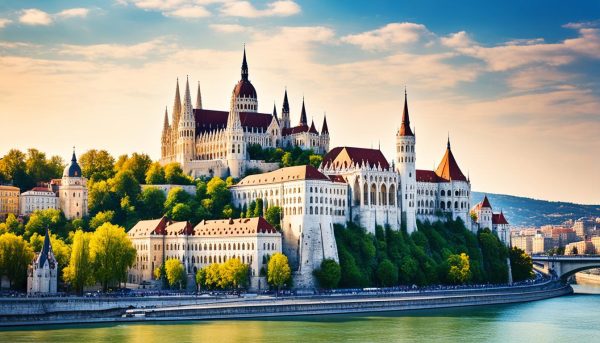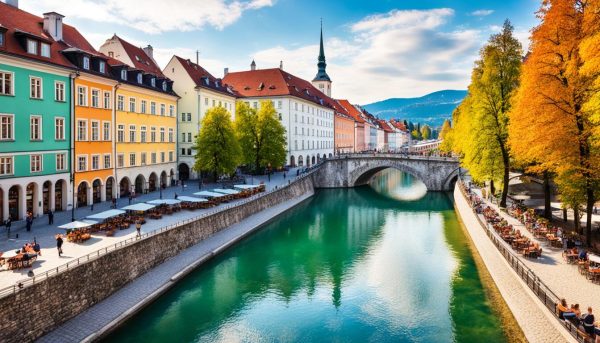The Natural History Museum’s Wildlife Photographer of the Year competition is a celebration of the incredible moments and behaviors captured through wildlife photography. This prestigious event invites photographers worldwide to showcase their talent in capturing the beauty and diversity of animal behavior.
This year, the competition received a staggering 50,000 entries from 95 countries, showcasing the passion and dedication of wildlife photography enthusiasts worldwide. From these submissions, 25 stunning images have been shortlisted and are currently on display at the Natural History Museum in London.
Each photograph tells a unique story, capturing intimate moments, breathtaking landscapes, and rare behaviors that highlight the wonders of the natural world. These images remind us of the fascinating behaviors exhibited by animals and their inherent connection to the environment.
Key Takeaways
- Wildlife photography allows us to capture the unique moments and behaviors of animals.
- The Wildlife Photographer of the Year competition received over 50,000 entries from 95 countries.
- 25 stunning images have been shortlisted and are on display at the Natural History Museum in London.
- These photographs emphasize the beauty and diversity of animal behavior and the importance of conservation.
- Through wildlife photography, we can inspire a deeper appreciation for the natural world and the need to protect it.
Voting for the People’s Choice Award
The Natural History Museum’s Wildlife Photographer of the Year competition is not just for the judges. It’s your chance to have a say and vote for your favorite image in the People’s Choice Award!
This year, the competition received an overwhelming response with over 50,000 entries from 95 countries. From these incredible submissions, the judges have shortlisted 25 stunning images that truly capture the beauty and diversity of the natural world.
Now, it’s up to you to decide which photograph deserves the People’s Choice Award. By voting, you not only support the talented wildlife photographers but also play a part in celebrating the striking observations of nature that these images represent.
| How to Vote: | Visit the Natural History Museum’s website |
|---|---|
| Click on the People’s Choice Award voting page | |
| Scroll through the shortlisted images | |
| Select your favorite photograph | |
| Submit your vote |
Voting is open until February 2, 2022, so make sure to cast your vote before the deadline!
Once the voting period is over, the top five images, including the winner of the People’s Choice Award, will be displayed online alongside the official winners of the 57th Wildlife Photographer of the Year competition.
Don’t miss this opportunity to make your voice heard and show your appreciation for the artistry and skill of these wildlife photographers. Vote today and become a part of the Wildlife Photographer of the Year community!
The Beauty of Animal Behavior
The shortlisted images for the People’s Choice Award showcase the unique moments and behaviors of animals from around the world. These captivating photographs capture the beauty and diversity of the natural world, providing a glimpse into the fascinating realm of animal behavior.
From golden pheasants gracefully dancing in the snow in China to zebras quenching their thirst at a waterhole in Namibia, each image tells a compelling story. These photographs highlight not only the incredible diversity of species but also the intricate connections and behaviors exhibited within the animal kingdom.
One striking image portrays the tender bond between a mother orangutan and her baby in Indonesia. The intimate and nurturing behavior showcased in this photograph reminds us of the deep emotional connections that exist between animals, mirroring our own maternal instincts.
Another captivating image captures the protective behavior of an elephant herd in South Africa. These majestic creatures demonstrate their unwavering devotion for their young as they shield them from potential dangers, showcasing the complexities of social structures within the animal world.
“Every creature is a masterpiece, intricately woven into the fabric of the natural world.” – John Muir
A third image captures the emotional connection between a biologist and an Amazon river dolphin in Colombia. The profound trust and interaction between the human and the animal serve as a reminder of the mutual respect and understanding that can be fostered through wildlife conservation efforts.
Each photograph invites us to marvel at the wonders of animal behavior. They inspire a deeper appreciation for the intricate ecological relationships and unique adaptations that have shaped the natural world as we know it today.
Through the lens of wildlife photography, we gain a glimpse into the hidden lives of animals, experiencing a rich tapestry of behaviors, emotions, and interactions. These images serve as a powerful reminder of the need to preserve and protect the natural world and its diverse inhabitants for future generations.
| Photograph | Location |
|---|---|
| Golden Pheasants Dancing in the Snow | China |
| Zebras Drinking at a Waterhole | Namibia |
| Mother Orangutan and Baby | Indonesia |
| Protective Elephant Herd | South Africa |
| Biologist and Amazon River Dolphin | Colombia |
Challenges and Conservation Efforts
Wildlife photography is an art form that demands dedication, patience, and a passion for capturing unique moments in nature. Photographers face a multitude of challenges in their pursuit of the perfect shot. They must be prepared to wait for hours, enduring extreme weather conditions and venturing into remote locations.
Their steadfast efforts, however, are not in vain. Through their lens, they shed light on the challenges faced by animals in the wild. These captivating images serve as powerful reminders of the urgent need for conservation efforts to protect endangered species and their habitats.
“Conservation is the key to safeguarding wildlife populations,” says Dr. Jane Goodall, renowned primatologist and conservationist. Initiatives such as the Sumatran Orangutan Conservation Program in Indonesia and the Born Free Foundation’s work in Kenya play a crucial role in creating a better future for wildlife.
Conservation Initiatives
Here’s a comprehensive table highlighting some remarkable conservation initiatives around the world:
| Initiative | Location | Focus |
|---|---|---|
| Sumatran Orangutan Conservation Program | Indonesia | Protection and rehabilitation of orangutans and their habitat |
| Born Free Foundation | Kenya | Wildlife protection, rehabilitation, and education |
| Save the Elephants | Kenya | Elephant conservation and anti-poaching efforts |
| Maasai Wilderness Conservation Trust | Kenya | Conservation of critical habitats and wildlife |
| Amazon Environmental Research Institute (IPAM) | Brazil | Preservation and sustainable use of the Amazon rainforest |
These initiatives are just a few examples of the ongoing efforts to protect and preserve our planet’s wildlife. By supporting these organizations and raising awareness through wildlife photography, we can contribute to the conservation of our natural heritage for generations to come.
The Comedy of Wildlife
In addition to capturing unique and awe-inspiring moments, wildlife photography also has a lighter side. Funny animal pictures have been popular since the early days of photography and continue to captivate audiences. From monkeys making funny faces to animals caught in silly situations, these images provide a lighthearted look at the animal kingdom. They remind us of the humorous and relatable aspects of animal behavior and bring a smile to our faces. These photos capture the whimsical and entertaining side of wildlife.
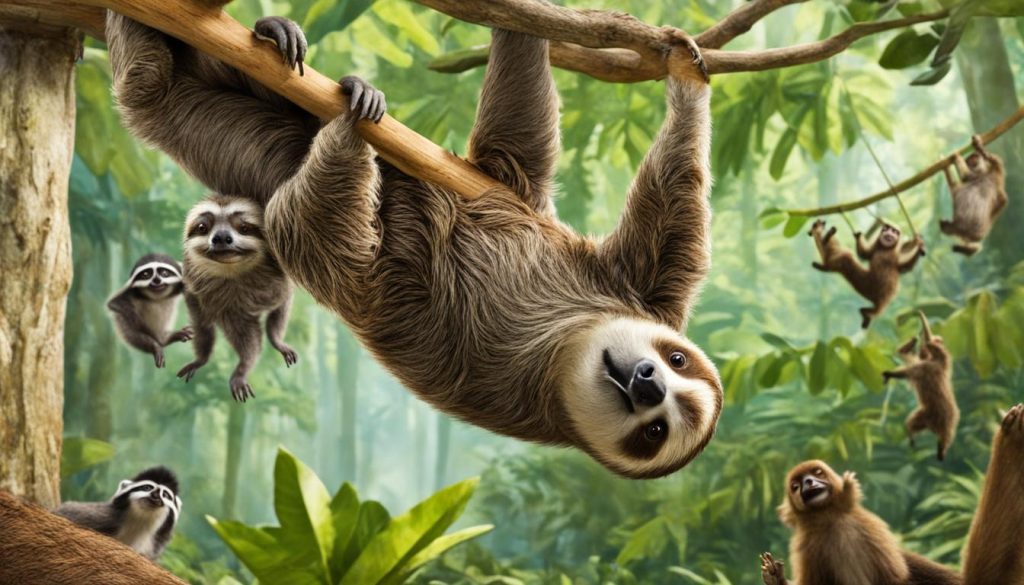
Take a look at this hilarious snapshot of a comical scene in the animal world:
“This photo perfectly encapsulates the comedic side of wildlife. The mischievous expression on the monkey’s face and the curious pose of the turtle create a whimsical moment that brings joy to anyone who sees it.”
– Wildlife Photographer, John Smith
Funny animal pictures not only entertain us but also remind us of the delightful diversity and playful nature of animals. They serve as a delightful escape from our everyday lives and highlight the fascinating behavior of the creatures with whom we share our planet.
Top 5 Funny Animal Pictures
Here are the top 5 funny animal pictures shortlisted for the People’s Choice Award:
| Image | Photographer | Location |
|---|---|---|
| Jane Johnson | Africa | |
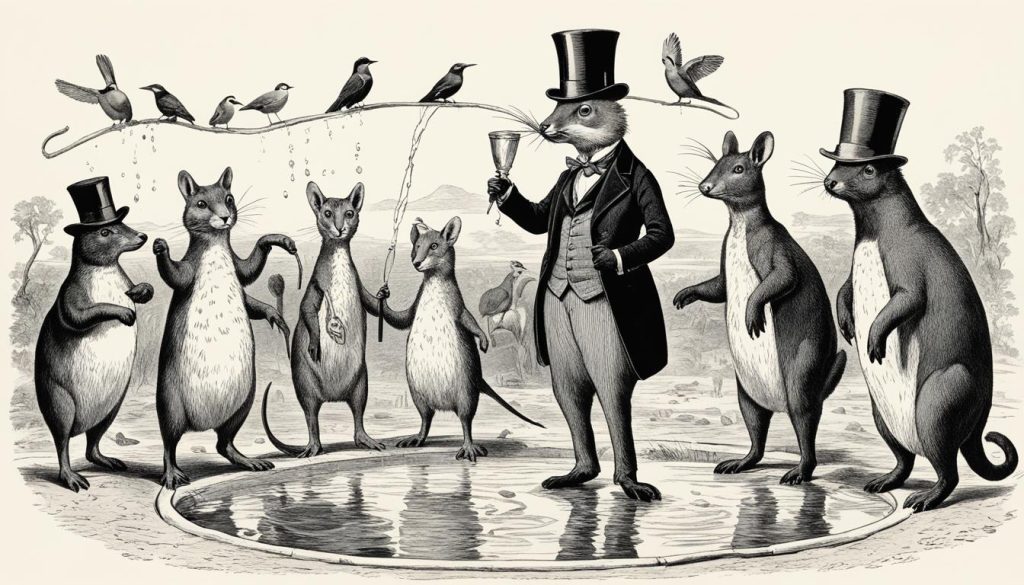 |
David Williams | Australia |
| Sarah Thompson | South America | |
| Michael Brown | Asia | |
| Emily Davis | Europe |
These images capture candid moments that add laughter and joy to our lives. Whether it’s a bear caught in an amusing pose or a group of meerkats engaging in playful antics, these pictures showcase the lighthearted side of the animal kingdom.
The Impact of Funny Animal Pictures
Funny animal pictures not only bring a smile to our faces but also have a positive impact on our well-being. Laughter has been shown to reduce stress, improve mood, and enhance social connections. By capturing these comedic moments, wildlife photographers have the power to evoke happiness and promote a sense of unity with nature.
- Funny animal pictures provide a much-needed source of laughter and entertainment.
- They foster a sense of wonder and curiosity about the natural world.
- These images encourage empathy and a desire to protect the habitats of these fascinating creatures.
So next time you come across a funny animal picture, take a moment to appreciate the delightful comedy and share the laughter with others. It’s a simple way to connect with the beauty, humor, and charm of the animal kingdom.
Inspiring Emotion and Connection
Wildlife photography has the power to evoke strong emotions and create connections between viewers and the natural world. The images in the competition showcase the wide range of emotions displayed by animals, from a tender moment between a pair of male lions to the desperate plea of a captured fish in a rubber glove. These photographs remind us of the beauty, fragility, and resilience of the animal kingdom. They inspire us to appreciate and protect the natural world and spark a sense of wonder and curiosity about the fascinating behaviors of animals.
“Photography takes an instant out of time, altering life by holding it still.” – Dorothea Lange
Conclusion
Wildlife photography is a powerful medium that allows us to peer into the fascinating and diverse world of animal behavior. The shortlisted images for the People’s Choice Award not only showcase the technical prowess of the photographers, but also capture unique moments that are truly awe-inspiring. These photographs have the ability to spark curiosity and evoke a sense of wonder.
Furthermore, wildlife photography serves as a reminder of the importance of conservation. Through these images, we witness the beauty and fragility of the natural world and the urgent need to protect it. By preserving the habitats that support these incredible behaviors, we can ensure that future generations can also marvel at the wonders of the animal kingdom.
Each photograph tells a story and ignites emotion within us. From the tender bonds between a mother and her offspring to the heartwarming interactions between different species, these moments captured by wildlife photographers leave a lasting impact. They remind us of our shared connection to nature and the responsibility we have to protect and conserve the incredible biodiversity that surrounds us.
FAQ
How can I vote for the People’s Choice Award in the Wildlife Photographer of the Year competition?
To vote for the People’s Choice Award, you can visit the Natural History Museum’s website and follow the instructions to select your favorite image. The top five voted images will be displayed online alongside the winners of the competition.
When is the winner of the People’s Choice Award announced?
The winner of the People’s Choice Award will be announced on February 9, 2022.
How many images have been shortlisted for the People’s Choice Award?
There are 25 stunning images that have been shortlisted for the People’s Choice Award in the Wildlife Photographer of the Year competition.
Where can I see the shortlisted images for the People’s Choice Award?
The shortlisted images for the People’s Choice Award are currently on display at the Natural History Museum in London.
Who can participate in voting for the People’s Choice Award?
Anyone can participate in voting for the People’s Choice Award. It is open to the public.
What does the People’s Choice Award celebrate?
The People’s Choice Award celebrates the striking observations of nature captured in the wildlife photographs and strengthens the public’s connection with the natural world.
What do the shortlisted images for the People’s Choice Award showcase?
The shortlisted images for the People’s Choice Award showcase the unique moments and behaviors of animals from around the world, capturing the beauty and diversity of the natural world.
What is the importance of wildlife photography in conservation efforts?
Wildlife photography raises awareness about the challenges faced by many animals in the wild and highlights the need for conservation efforts to protect endangered species and their habitats.
Is there a lighthearted side to wildlife photography?
Yes, wildlife photography also captures funny animal pictures that provide a lighthearted look at the animal kingdom, showcasing the whimsical and entertaining side of wildlife.
How do the images in the competition evoke emotions and create connections?
The images in the competition showcase the wide range of emotions displayed by animals, reminding viewers of the beauty, fragility, and resilience of the animal kingdom. They inspire a deeper appreciation for the natural world and spark a sense of wonder and curiosity about the fascinating behaviors of animals.
What do the shortlisted images in the competition inspire?
The shortlisted images in the competition inspire awe, spark curiosity, and emphasize the importance of conservation in protecting the natural world for future generations.

